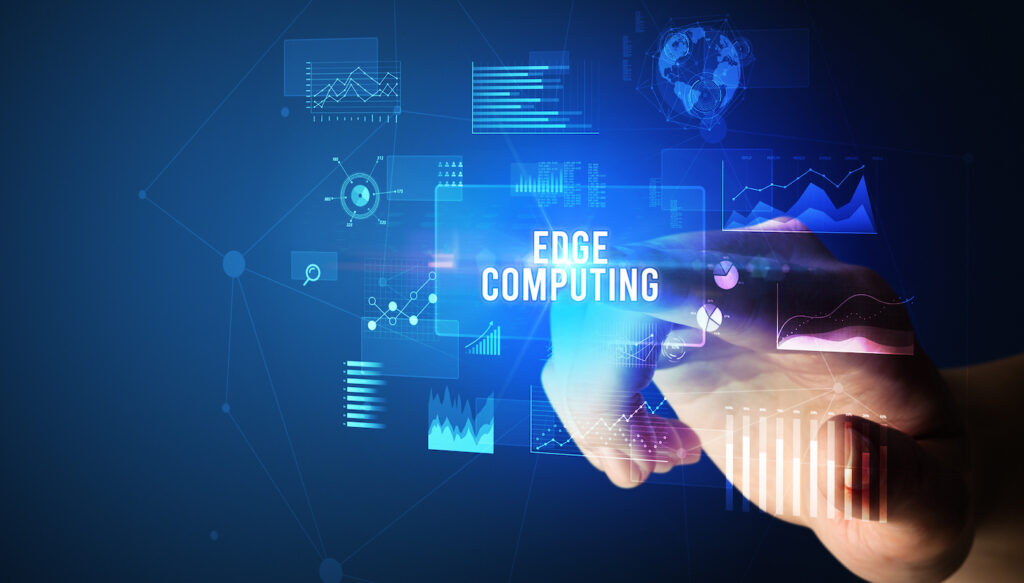In a fast-paced digital world where speed, security, and scalability are no longer optional, edge computing has emerged as a game-changer for small businesses. Whether you’re running a retail shop, managing remote teams, or handling customer data, edge computing can dramatically enhance your business operations, reduce latency, and cut costs.
This guide is your roadmap to understanding what edge computing is, why it matters, and how to leverage it effectively in your small business.
What Is Edge Computing?
Edge computing refers to the processing of data closer to the source, rather than relying on a centralized cloud. This means your devices, sensors, or local servers handle data in real time, rather than sending it all the way to the cloud and back.
Why is this a big deal?
- Lower latency – Faster response times for apps and services
- Reduced bandwidth usage – Less data sent to the cloud
- Improved data security – Local data processing means fewer points of vulnerability
- Operational efficiency – Real-time analytics and automation at the source
Read more from IBM’s Edge Computing Overview
Why Your Small Business Needs Edge Computing
Edge computing isn’t just for tech giants. Here’s why small businesses like yours should jump on board:
1. Real-Time Customer Service
Your POS systems, smart kiosks, or mobile apps can deliver lightning-fast service when they process data locally.
2. Enhanced Data Privacy
Regulations like GDPR and CCPA demand better data control. Edge computing allows you to store sensitive info locally, boosting compliance and customer trust.
3. Reduced Operational Costs
Cut down on expensive cloud processing and bandwidth fees. With edge computing, much of the work is done locally.
4. IoT Optimization
Smart thermostats, cameras, and inventory sensors all run more efficiently when edge processing is used.
Learn how Cisco sees edge computing enabling digital transformation.
Best Edge-Computing Solutions for Small Businesses
Here are some of the most practical, affordable, and effective edge solutions you can implement today:
1. Edge Gateways
Think of these as mini servers that sit between your IoT devices and the cloud. They process and analyze data locally before deciding whether to send it to the cloud.
Recommended Tools:
- HPE Edgeline EL1000 (Hewlett Packard Enterprise)
- Dell EMC VEP4600
2. Local Data Hubs
Perfect for retail and healthcare. These local servers handle customer transactions and personal data without sending everything to the cloud.
3. AI-Enabled Cameras & Sensors
Great for small warehouses, stores, and offices. These devices analyze video/data locally and trigger instant alerts for motion or temperature changes.
4. Mobile Edge Solutions
Useful for businesses with on-the-go operations like delivery services or pop-up events. Devices process data on-site and sync later when needed.
Explore more on AWS IoT Greengrass for small devices.
Edge Computing vs Cloud Computing: Quick Comparison
| Feature | Cloud Computing | Edge Computing |
|---|---|---|
| Latency | Higher (due to distance) | Ultra-low (local processing) |
| Cost | Higher over time | Cost-effective for frequent tasks |
| Security | More exposure | Greater local control |
| Bandwidth | High usage | Optimized |
| Ideal Use | Heavy computing/data storage | Real-time, responsive tasks |

Real-World Use Cases of Edge Computing in Small Businesses
Retail:
- Smart shelves updating stock levels instantly
- Digital signage that changes based on customer presence
Healthcare:
- Edge devices monitoring patient vitals and alerting staff instantly
- Localized health data compliance
Agriculture:
- Smart irrigation systems adjusting in real-time to moisture sensors
- Drones mapping crop health
Manufacturing:
- Machinery with sensors to detect breakdowns before they occur
- Production line automation
More case studies from Intel Edge Solutions
How to Get Started with Edge Computing
Getting started doesn’t have to be complex or expensive. Here’s how to approach it:
- Assess Your Current Infrastructure
- What devices already collect data?
- What cloud services are you using?
- Define Your Goals
- Faster response time?
- Lower costs?
- Better security?
- Choose the Right Hardware
- Edge servers or gateways?
- Mobile edge solutions?
- Select Smart Software
- Look into containerized apps like Docker or Kubernetes
- Hire or Consult with Experts
- Freelance edge computing consultants or managed IT firms can help set up systems affordably
Benefits of Edge Computing in Plain Terms
- Speed: Instant data response = happier customers
- Savings: Lower cloud fees = more money in your pocket
- Simplicity: Automate tasks = fewer headaches
- Security: Local data = less hacking risk
High CPC Keywords to Focus On
1. Edge Computing for Small Business
2. Edge Computing Security Solutions
3. Real-Time Business Data Processing
4. IoT and Edge Technology
5. Low-Latency Application Deployment
6. Cloud vs Edge Computing Cost Comparison
7. Edge AI Solutions for Retail
Include these keywords naturally across your blog post to boost SEO and maximize ad earnings.
Frequently Asked Questions (FAQs)
What is the main advantage of edge computing over cloud computing?
Edge computing drastically reduces latency by processing data locally, making it ideal for real-time decision-making.
How can small businesses afford edge computing?
There are many affordable tools and services now available, including mini edge servers, smart IoT kits, and pay-as-you-go software options.
Is edge computing secure?
Yes. In fact, edge computing improves security by keeping sensitive data closer to the source and reducing exposure to cloud breaches.
Do I need special staff to manage edge computing?
Not necessarily. Many solutions are plug-and-play or managed remotely by third-party providers.
Can edge computing work with my existing cloud setup?
Absolutely. Edge computing is often used in tandem with the cloud in a hybrid architecture.
Final Thoughts: The Edge Advantage
You don’t have to be a tech giant to benefit from edge computing. Whether it’s real-time insights, enhanced security, or lower cloud costs, edge computing offers practical, profitable, and scalable solutions for your business.
Start small. Think smart. Edge out your competition.
Want help choosing the right edge computing tools? Check out Microsoft Azure Edge Zone or consult a trusted IT partner today.
Related Posts:
- Top AI Tools for Small Businesses
- How to Secure IoT Devices in 2025
- Affordable Cloud Services for Startups
Found this post helpful? Share it, bookmark it, and sign up for updates on the latest edge computing trends!



